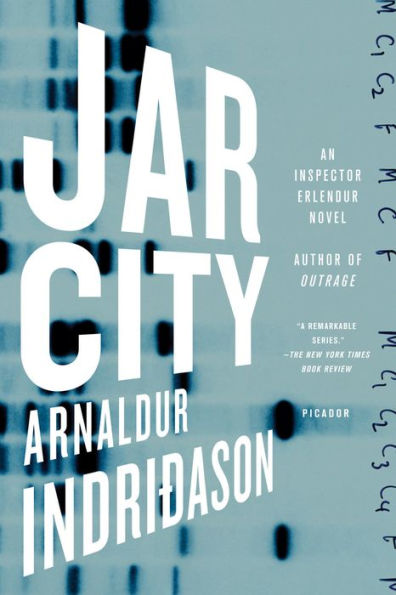Reading Group Guide
Discussion Questions
1. At the beginning of the book (pages 4–5), Erlendur says that being a detective means investigating the obvious whereas forensics handles the mysterious. Why do you think he might have said this? What makes forensic evidence more mysterious? If this is so, why do mysteries usually concentrate on the detective rather than the crime scene investigator?
2. Erlendur has a history of family difficulties, particularly with his daughter Eva Lind. Do you think that his past helps him as a detective or is it a distraction? What do you think motivates Erlendur, what drives him?
3. How would this story have been different if it were set in America instead of Iceland? Would the characters be different? Would the crime have been different? Would the investigation methods have been different? What about this case is peculiar to Iceland? What's different about an Icelandic murder?
4. On page 124, Erlendur's mentor Marion Briem told him about Holberg: "Don't let him kill any part of you that you don't want rid of anyway." What do you think he meant? Why was it Holberg that Marion warned Erlendur about and not just the case in general? How could Holberg have that kind of power over him?
5. Given all that is revealed about Holberg throughout the story, everything we know about his past, was Holberg's murder justified? Was justice served? Would Holberg simply have gotten away with his crimes otherwise? Was there any good in Holberg?
6. If you were in Erlendur's place, would you have made some of the same gambles in pursuing the case? Would you have sent Elínborg and Sigurdur Óli to comb through the residents of Húsavík to look for women who might have been raped by Holberg? Would you have had the floor of Holberg's apartment excavated?
7. What is the relationship in Erlendur's mind between his daughter Eva Lind and Audur, Holberg's daughter who died when she was four?
8. What kind of a detective is Erlendur? What sort of a character is he? How does he resemble the people around him? Is he more like the criminals or more like the victims? Could you imagine Erlendur ever doing some other job besides being a detective? If Erlendur had committed the murder, how might he have done things differently?
9. In another episode of the book, Erlendur comes across a case of the woman who had run away from her wedding. What is the parallel between this situation and the case of Holberg's murder?
10. Was Katrín right to keep the origins of Einar secret? Should she have told her husband? How do you think she managed to raise her son without treating him differently? Would there have been a way to tell him that could have avoided all of this?
11. On page 256, Erlendur compares the genetic family tree compiled by the Genetic Research Centre to the message tree that he saw at the wedding. Why does he make this comparison?
12. On page 258, Erlendur compares the database of the genealogical histories of people in Iceland with the secret collection of organ samples that he found earlier. He calls them both "jar cities." Why does he think they are both jar cities? Why is this the title of the book? Is it ethical to have either of these collections when nobody knows about them and nobody has access to them?
13. There's a lot of talk in the story about how things used to be during the time of the rape, particularly with the stealing of organ samples from hospitals and the treatment that Kolbrún received when she reported the rape. What is the parallel between these two things? What does it say about what things were like in Iceland at the time? How had things changed by the time Erlendur was investigating Holberg's death?
14. Ultimately, Einar murdered Holberg and then committed suicide because he couldn't stand the thought that he was like Holberg, or, rather, that he felt he actually was Holberg. In what ways does Einar seem like Holberg? In what ways does he seem more like his mother? Is he justified at all in his fear? Or has he simply been too devastated by recent events to think clearly?
15. How might Einar have gotten away with the murder? Did he want to? Or did he want to get caught? If you had been in his place would you have reacted the way he did? Or would you have tried not to think about it?
16. Why does Eva Lind want to name her child Audur? What parallel is there between her unborn child and Audur? Why does she feel a connection between the two?
17. In the end, the case is solved, Erlendur finds out that his chest pains are not some mortal illness, and he seems to patch things up with his daughter. How might have solving this case and entering into the sordid world of Holberg's crimes helped him?






